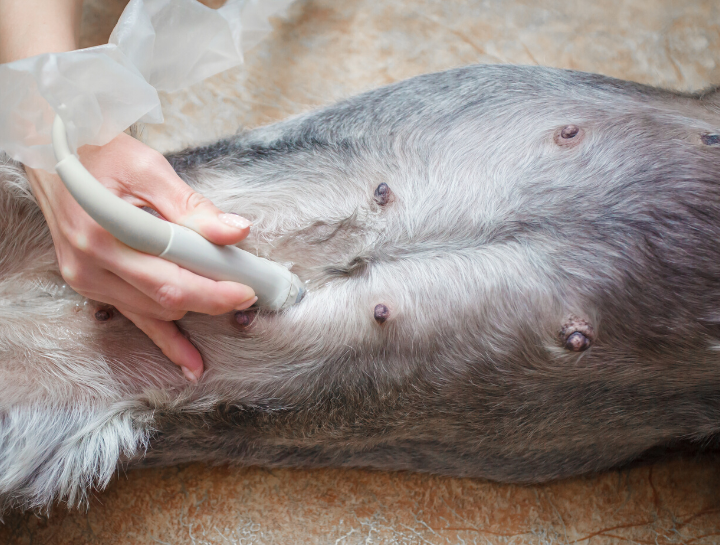Pet Ultrasound
A non-invasive way to diagnose sick & injured pets.
We offer veterinary ultrasounds for pets. An ultrasound (also called a sonogram) is a non-invasive procedure used to evaluate the internal organs. Ultrasound examinations can be used to examine the abdominal organs, heart, eyes and reproductive organs.
For many abdominal disorders, both ultrasound and X-rays are recommended for optimal evaluation. The X-ray shows the size, shape and position of the abdominal contents, and the ultrasound allows the veterinarian to see inside the organs. An abdominal ultrasound is indicated to evaluate pets with abdominal symptoms such as vomiting, diarrhea, straining to urinate or urinating blood. This test can also be helpful in cases of reproductive abnormalities, unexplained fever, loss of appetite or weight loss. An abdominal ultrasound is often done if an X-ray, blood tests, or physical examination indicate a problem with an abdominal organ such as the liver, spleen, or pancreas. If physical examination reveals abdominal pain or enlargement of an abdominal organ, ultrasound examination could be indicated. As with people, the abdominal ultrasound can also be used to detect early pregnancy and determine viability of the fetus later in the pregnancy.
How does ultrasound work?
When the sound waves penetrate the body, they “bounce” back. The ultrasound machine measures the time it takes for a sound wave to bounce back and creates an image.
What conditions can be diagnosed by ultrasound?
Some injuries and conditions that can be identified via ultrasound include:
- Bladder and kidney stones
- Gastrointestinal obstructions
- Pregnancy
- Cysts and tumors
- Heart conditions
Ultrasound also allow us to safely collect biopsy and fluid samples without having to perform invasive surgeries.
If your pet is showing signs of illness or injury, call us at (609) 888-3400 to schedule an appointment. An ultrasound may be able to assist in diagnosing the problem.

